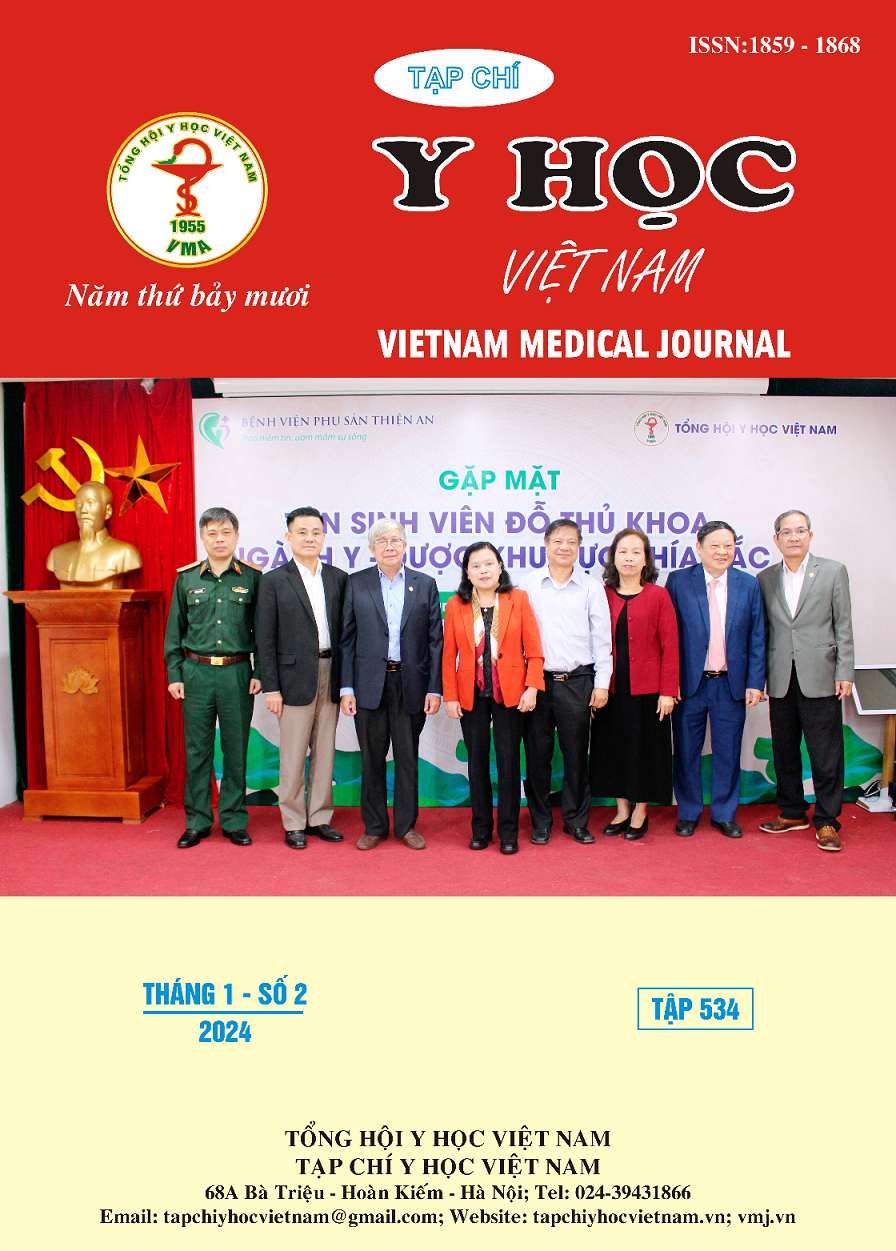RESULTS OF THE STUDY ON THE APPLICATION OF INTRACARDIAC ECHOCARDIOGRAPHY (ICE) IN THE DIAGNOSIS AND TRANSCATHETER CLOSURE OF ATRIAL SEPTAL DEFECTS AT CHO RAY HOSPITAL
Main Article Content
Abstract
Background: Percutaneous septal closure is the preferred treatment strategy. Esophageal echocardiography is an imaging technique used to diagnose and evaluate the anatomy of the atrial septal defect as well as assist in the procedure to close the atrial septal defect; However, the patient needs to be pre-anesthetized and have adequate airway protection during the procedure. Intracardiac echocardiography is a new imaging technique used to evaluate atrial septal defect anatomy and guide atrial septal defect closure. Objective: Evaluate the correlation of intracardiac echocardiography and transesophageal echocardiography on the assessment of atrial septal defect anatomy. Evaluating the safety and efficacy of transcatheter closure of atrial septal defect under intracardiac echocardiography guidance. Subjectives and method: 40 patients atrial septal defect were treated at the cardiovascular centre, Cho Ray Hospital. The prospective, open label, non-randomized, longitudinal study. Result: 40 patients had mean age of 43,55±12,90 years old (17 – 65 years), female 80%. The mean maximum ASD diameter measured by ICE was significantly larger than by TEE (25.40 ± 3.20 mm vs. 23.88 ± 3.72 mm, p< 0.001). There was a strong correlation between ASD diameter measurements with TEE and ICE with correlation coefficient r= 0.792 (p< 0.001). The ASD diameter measured by TEE and ICE compared with the ASD diameter measured by size balloon both showed a good correlation of 0.547 and 0.909 (p < 0.001). The length of ASD rims measured by TEE was longer than ICE but the difference was not statistically significant. All patients were evaluated in-hospital and 1 month, recording 100% of the cases technical and procedural successes. After a 1-month follow-up period, we recorded patients with improved dyspnea according to NYHA class as well as the right ventricular diameter and pulmonary artery pressure on echocardiography. Conclusion: There was a strong correlation in assessing atrial septal defect anatomy with TEE and ICE. ICE is a feasible and safe technique, providing the full diameter of the atrial septal defect, the rims of ASD, and the atrial septum. It can replace TEE to guide the diagnosis and intervention closure of atrial septal defect.
Article Details
References
2. Balzer D. Intracardiac Echocardiographic Atrial Septal Defect Closure. Methodist Debakey Cardiovasc J, 2014 Apr-Jun; 10(2): 88–92.
3. Hijazi Z, Wang Z, Cao Q, Koenig P, Waight D, Lang R. Transcatheter closure of atrial septal defects and patent foramen ovale under intracardiac echocardiographic guidance: feasibility and comparison with transesophageal echocardiography. Catheter Cardiovasc Interv, 2001 Feb;52(2):194-9.
4. Meyer MR, Kurz DJ, Bernheim AM, Kretschmar O, and Eberli FR. Efficacy and safety of transcatheter closure in adults with large or small atrial septal defects. Springerplus, 2016; 5(1): 1841.
5. Mullen MJ, Dias BF, Walker F, Siu SC, Benson LN and, McLaughlin PR. Intracardiac echocardiography guided device closure of atrial septal defects. J Am Coll Cardiol, 2003 Jan 15; 41(2):285-92.
6. Naqvi N, McCarthy KP, Ho SY. Anatomy of the atrial septum and interatrial communications. J Thorac Dis, 2018 Sep;10(Suppl 24):S2837-S2847.
7. O'Byrne ML, Gillespie MJ, Kennedy KF, Dori Y, Rome JJ, Glatz AC. The influence of deficient retro-aortic rim on technical success and early adverse events following device closure of secundum atrial septal defects: An Analysis of the IMPACT Registry. Catheter Cardiovasc Interv, 2017 Jan;89(1):102-111.
8. Qingsu Lan, Fengchao Wu, Xudong Ye, Shaohua Wang, and Jingquan Zhong. Intracardiac vs. transesophageal echocardiography for guiding transcatheter closure of interatrial communications: a systematic review and meta-analysis. Front Cardiovasc Med, 2023; 10: 1082663.


